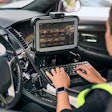The Charleston (S.C.) Police Department has joined the ranks of other departments who have begun relying on predictive policing data analytics to identify crime "hot spots" for enforcement.
The department has begun a partnership with IBM to help the city's more than 400 sworn officers more accurately evaluate and forecast crime patterns. The department is now using IBM's predictive analytics software. The predictive analytics software analyzes past and present crime records in seconds and evaluates incident and arrest patterns throughout the city.
The initiative goes hand-in-hand with a variety of crime-reduction initiatives implemented in the past five years including a crime analysis system, focused patrol strategies based on weekly crime meetings, and technology that captures and disseminates information quickly.
The initial focus of the project is to reduce robberies, and the department has begun by centralizing past and present criminal data and patterns.
Burglaries in the city often cluster in time and location. The individuals committing these crimes tend to have predictable patterns, and incidents usually take place near their homes or familiar locations. In addition, property crimes are not displaceable crimes, which means the criminals won't simply move two miles to another location.
"Criminals continue to evolve and so must we in order to keep pace and reduce the criminal activity that impacts Charleston residents and visitors," said Police Chief Gregory Mullen. "We are already seeing the potential value from this approach. It will help us provide critical information to the officers in the field."
Through predictive analytics, the CPD will be able to augment its officers' years of experience and knowledge and provide them with a more in-depth method of looking at crime trends by centralizing previously disparate information including patrols, types of criminal offenses that are trending, time of day, day of week, and even weather conditions.














